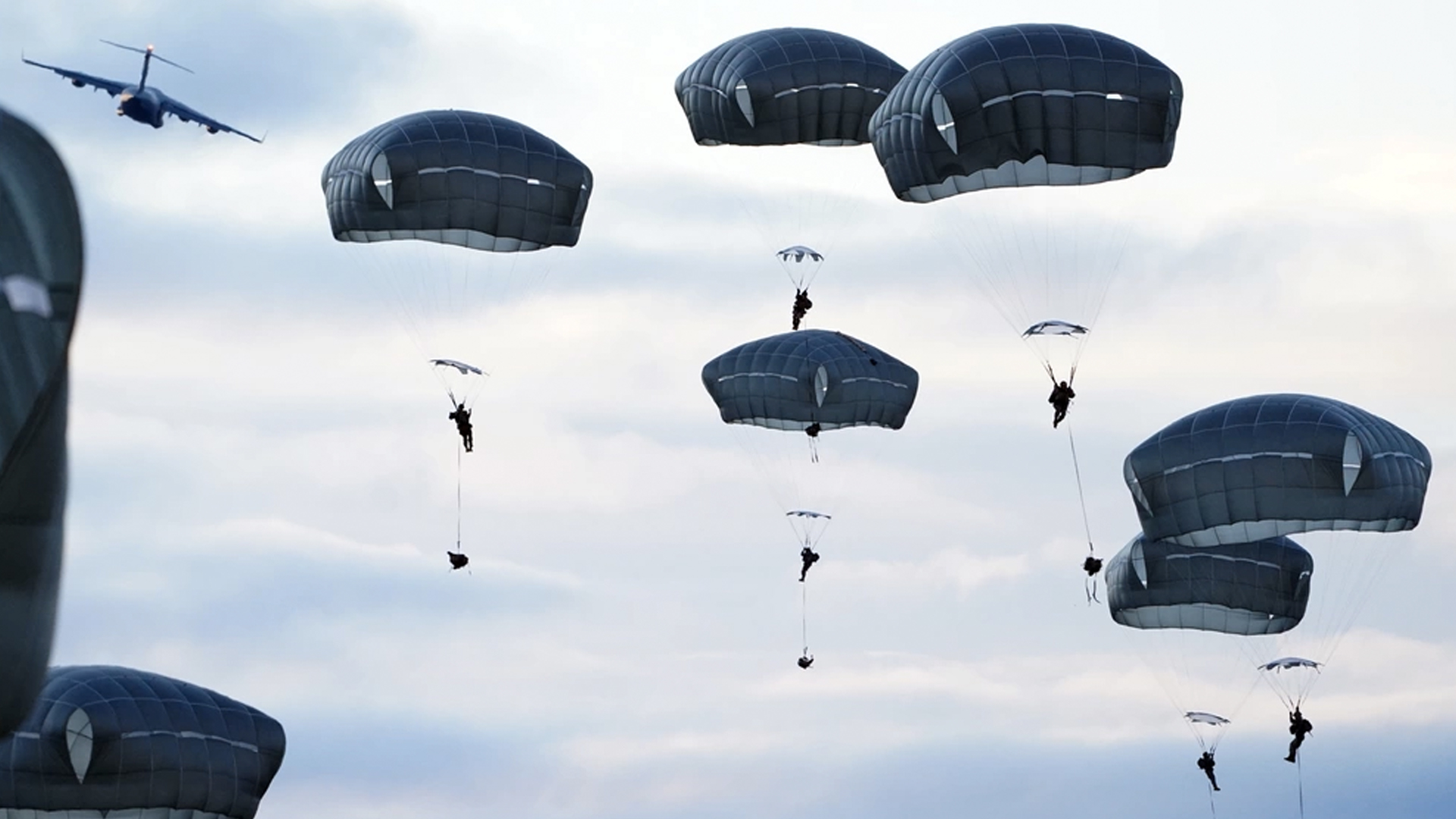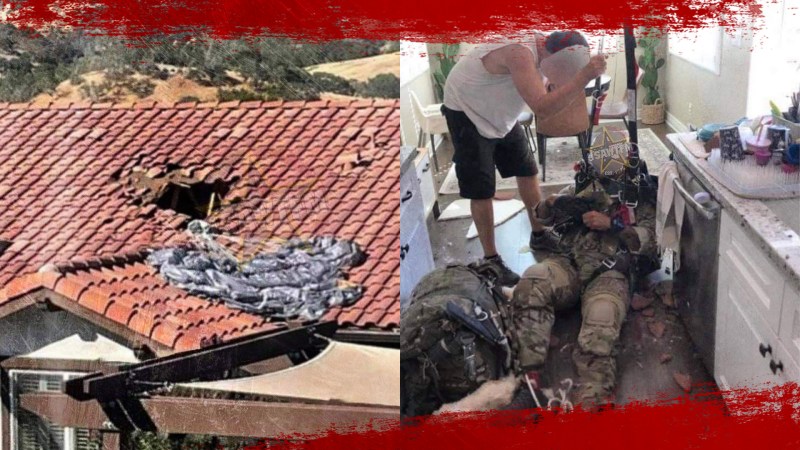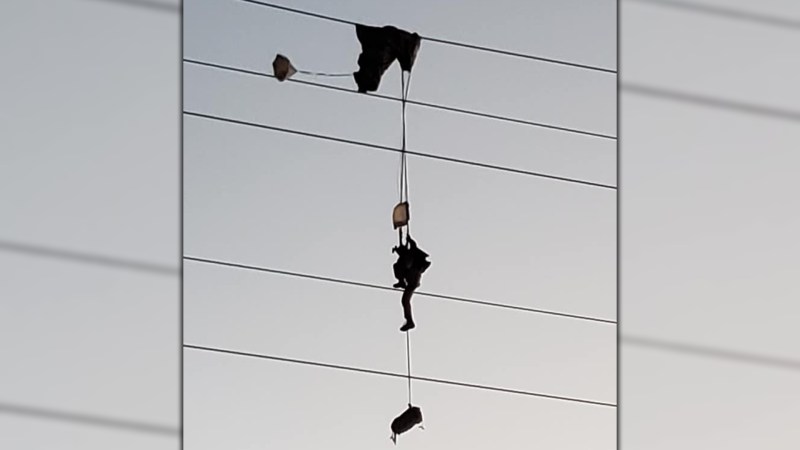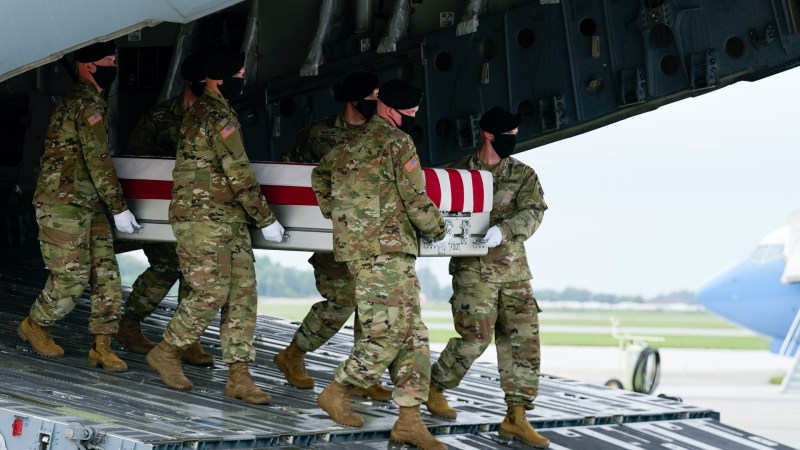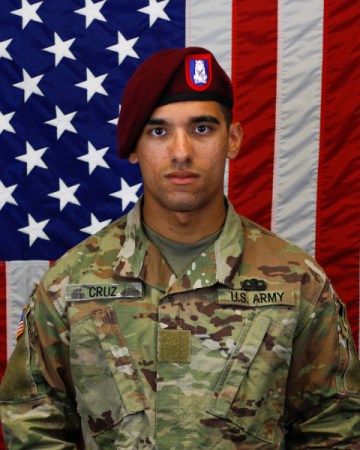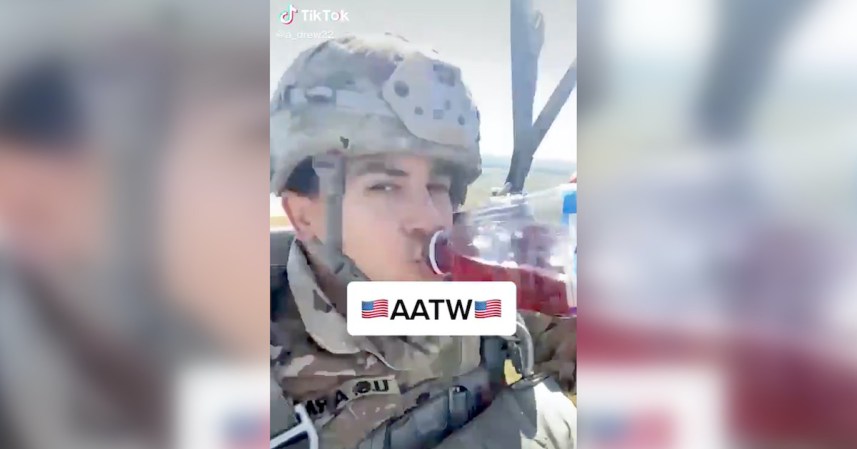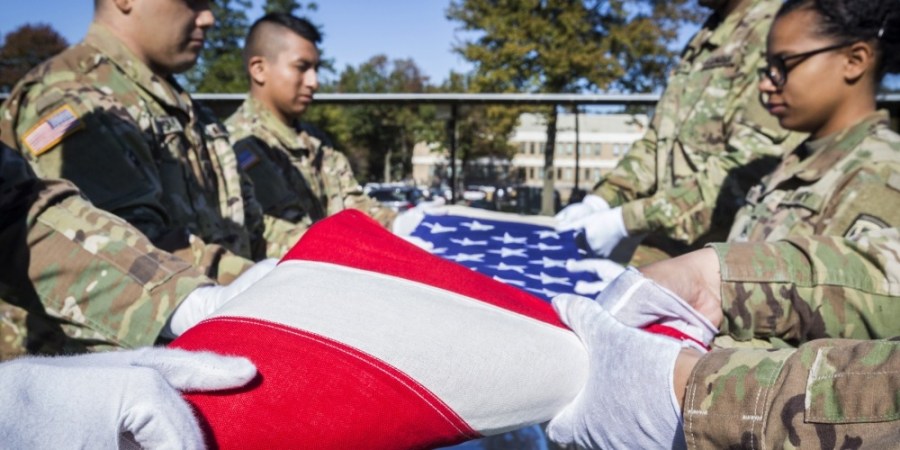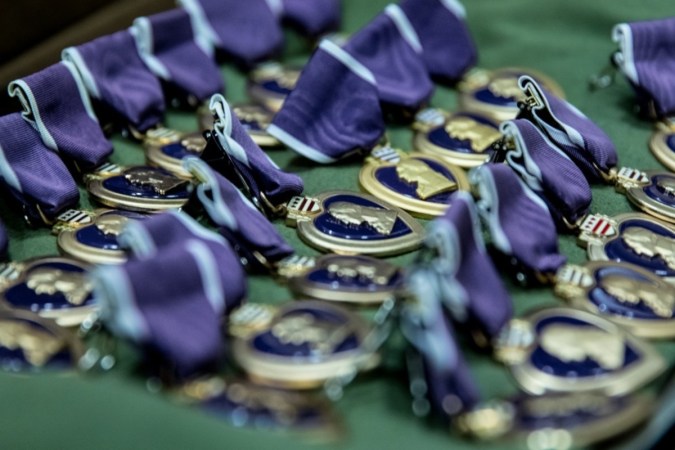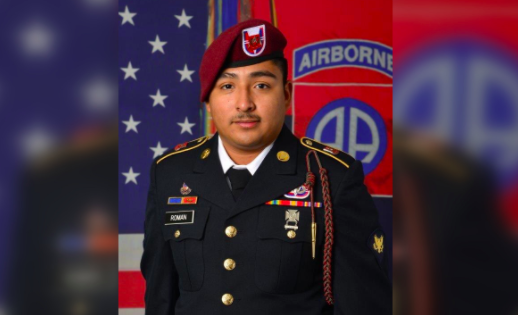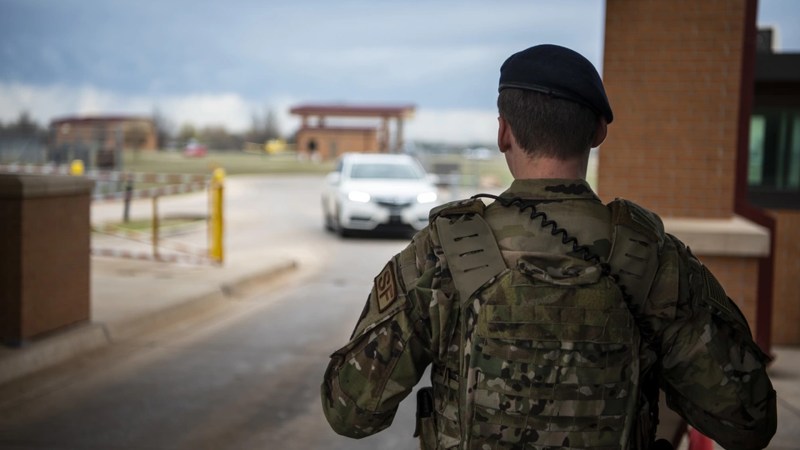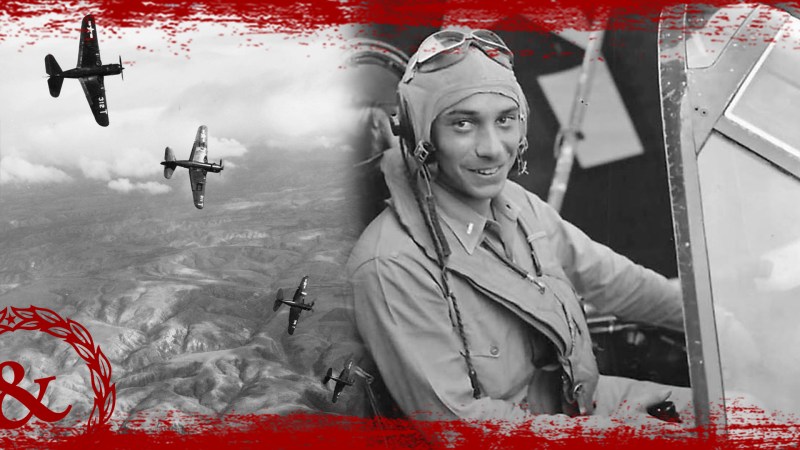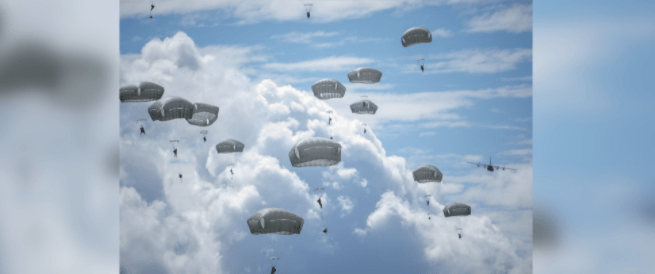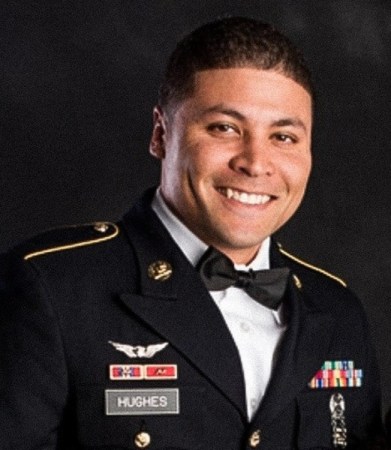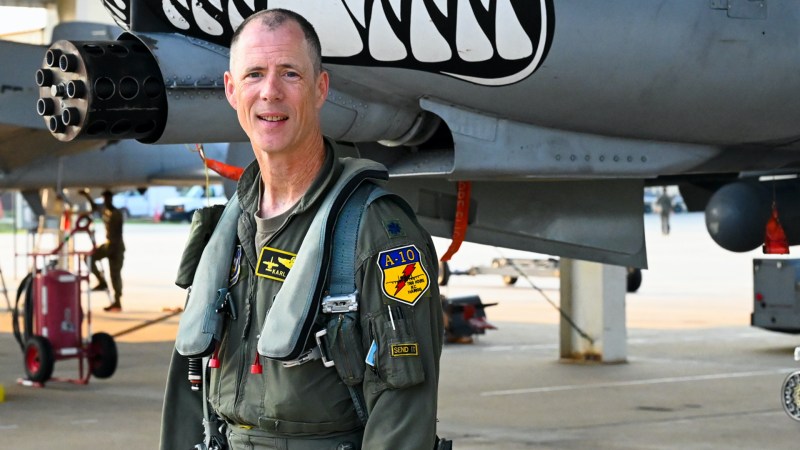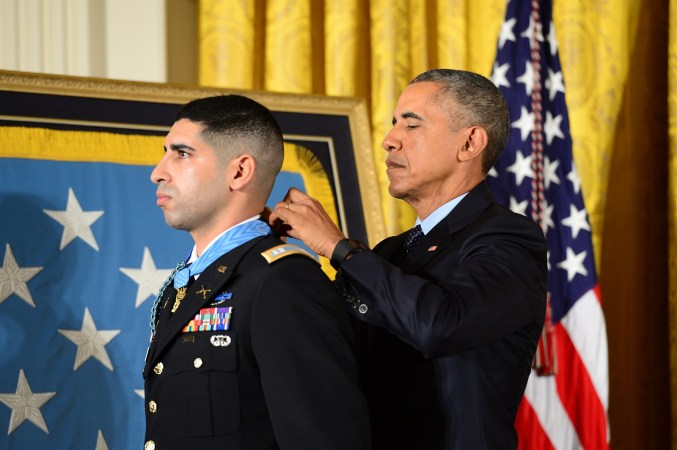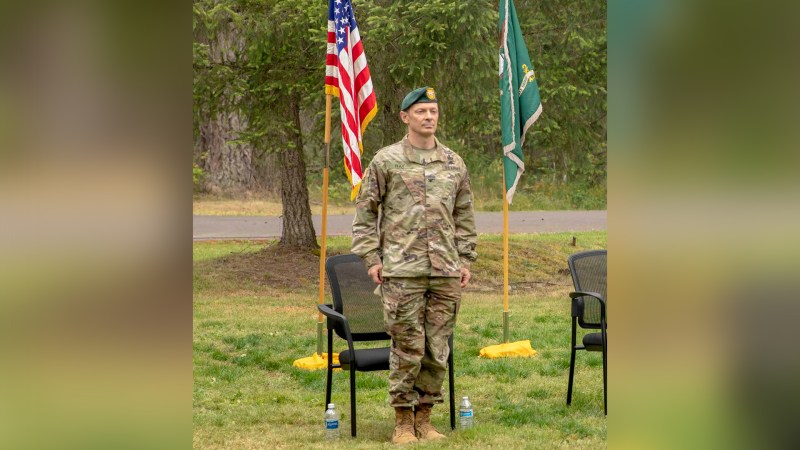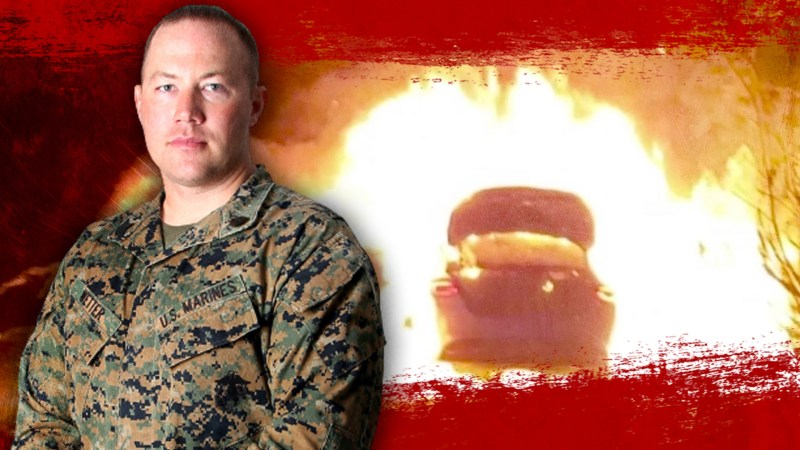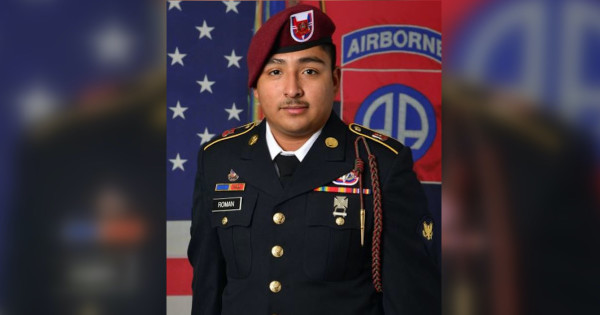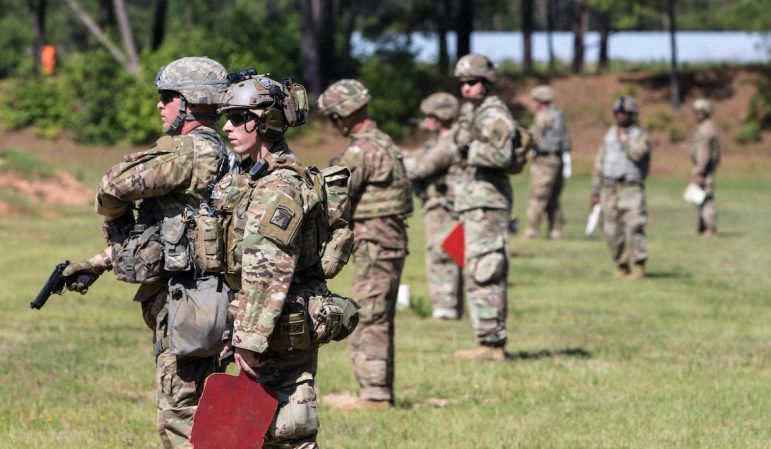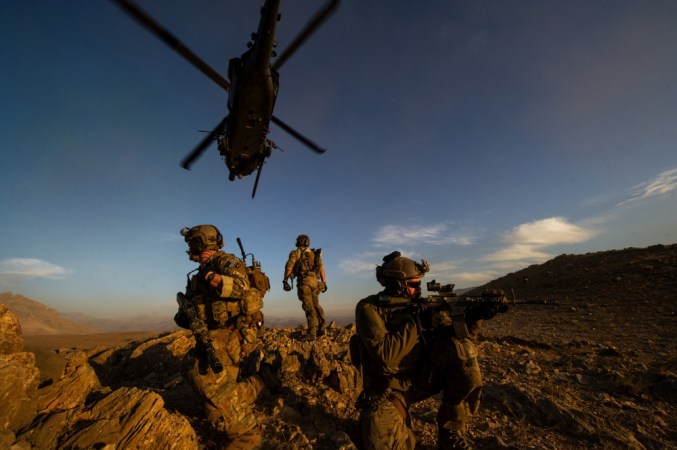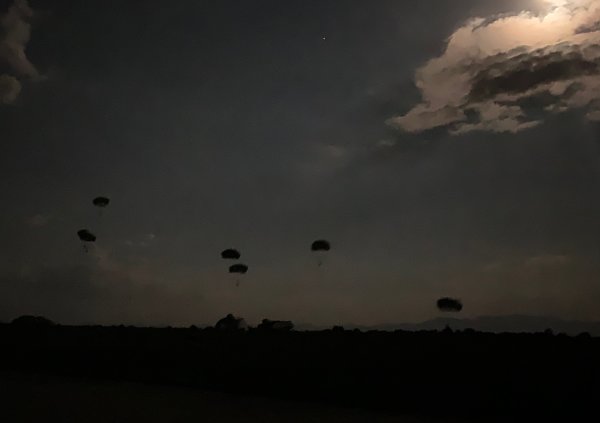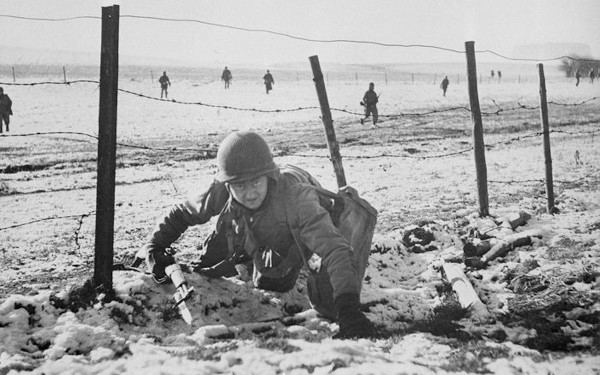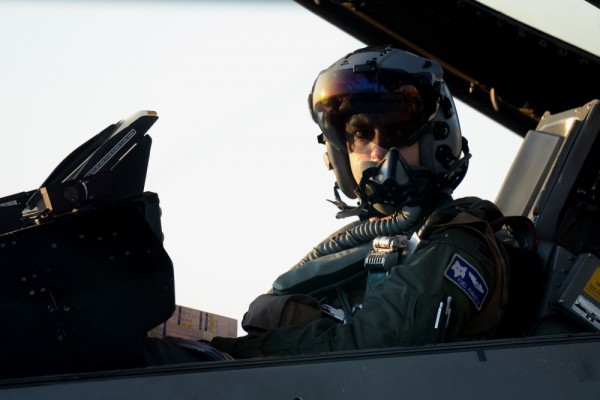It was a perfect night for jumping out of a perfectly good airplane. The moon was full and the sky was clear over Fort Bragg, North Carolina that evening in 1997 as Army Spc. Justin Connaher and the rest of his company with the 82nd Airborne Division lifted off aboard a C-141 Starlifter. Like any good paratrooper, Connaher had checked his parachute countless times that day and now looked forward to a 30-second ride back to Earth.
Instead, what Connaher got that night would not only break his body but also force him to find a new identity and sense of purpose.
The soldier’s incredible story of survival and strength was captured in a recent press release from Airman 1st Class Julia Lebens of Joint Base Elmendorf-Richardson, where Connaher currently works as an award-winning photographer and mentor to young photojournalists.
Something supernatural appears to have been at work that day. Before the jump, Connaher and the rest of the company had taken turns shaking a broken Magic Eight Ball on the company executive officer’s desk. Each paratrooper asked the Eight Ball if they were going to “burn in” on the jump. The broken toy responded “yes” to every person, except Connaher. For some reason when he asked, the Eight Ball said “no,” the only time it had ever said so, according to the press release.

Though the response unnerved Connaher, he prepared for the jump like everybody else and stepped out the aircraft door. But he soon realized he was falling faster than his fellow soldiers, which did not make sense at his light weight of 130 pounds.
“Looking up, he realized something was seriously wrong – his parachute had collapsed, looking like a half-rolled cigarette,” according to the press release.
As the ground rose to meet him, Connaher tried his reserve chute, but it did not release. It was a complete malfunction.
“I have this coming, maybe I haven’t lived my life right,’” the soldier thought at the time. “I’m 21, I’m about to die; I think I’ve been living my life wrong.”
Subscribe to Task & Purpose Today. Get the latest military news, entertainment, and gear in your inbox daily.
Remembering what his battalion commander said before each jump, Connaher locked his feet and knees together, bent his knees slightly, covered his face with his hands and arms and awaited impact. He heard a terrible crack and woke up in a hospital with a grocery list of terrible injuries. He was partially paralyzed, unable to see. Both his knees, his right pinky, right wrist, two ribs and several teeth were broken, his skull fractured in three places and every bone in his feet and ankles was shattered. Several of the vertebrae in his neck and back were fractured, his fourth and fifth lumbar vertebrae were fused, his colon and lower intestine were punctured, and he also had extensive damage to internal organs.
“The rest of his life would be spent recovering from this one day,” the press release said. “He’d have seizures, procedures, pain, Connaher had his final rites said to him twice while in the hospital because of residual effects from his accident.”
But those injuries did not spare him from the scorn of his salty Army doctor.
“I know who you are, you son of a bitch,” said the doctor, who knew Connaher from an earlier assignment at Fort Benning, Georgia. “You never came back for your appointment.”

A lifelong dream
Blowing off that earlier appointment was just one step of a lifelong journey where Connaher put his dream of becoming a paratrooper over everything else, including his own safety.
When he was seven years old, Connaher jumped off the roof of his home in Wausau, Wisconsin with nothing but a blanket as a parachute. He nearly broke his arm, but the pain did not sway him off course. Connaher’s father was a Vietnam-era Air Force veteran, and his grandfather served in the Army in World War II. He pored over his grandfather’s books about World War II, where the paratroopers stood out for their “different, cooler clothes … and got to fly in airplanes,” and also jump out of them, the press release said.
Within a few days of graduating high school, Connaher was on his way to Fort Benning. Boot camp provided its well-honed rude awakening, which in the early 1990s involved drill sergeants grabbing, throwing, and even punching recruits when nobody was looking. In jump school, a drill instructor even broke Connaher’s nose because he did not understand a command.
While at Fort Benning, Connaher had his first encounter with the doctor after reporting mysterious pain. It was suspected that he had a rare disease, but Connaher could not accept that diagnosis because it could endanger his dream of becoming a paratrooper. Rather than show up for a test, he ignored the pain. Connaher found out years later that he had suffered from a rare form of muscular dystrophy known as Charcot-Marie-Tooth disease, a condition that makes muscles waste away, especially with the active life of a paratrooper.
The young soldier did not know that yet: instead, he was more concerned with joining an airborne unit. For a while, that seemed a distant goal, because he was first assigned to a heavy anti-armor infantry unit and then as a truck driver in “muggy, smelly Fort Stewart, Georgia,” the press release said.
Connaher was miserable there, but a noncommissioned officer gave him good advice: if the young soldier volunteered to serve in South Korea for a year, he would have a high chance of earning a slot at the storied 82nd Airborne Division at Fort Bragg. Connaher took his advice, and after a year in South Korea he finally joined the ranks of a unit he had idolized since childhood.
The soldier soon found out that the 82nd had higher standards than his previous units. Connaher “had to be fast and strong,” but he was ready for the challenge. The paratrooper rose to become a team leader, then a squad leader and soon was trusted with a staff sergeant position despite being two ranks below that as a specialist. He spent much of his free time reading regulations and field manuals, and several people told him he “had the makings of a sergeant major of the Army,” the press release said.
“I don’t know about that; there’s only one of those,” Connaher said in the press release. Still, the comments rang true with the fact that the life of an Army paratrooper was all the soldier ever wanted.

‘If I don’t do this one more time, I’ll kill myself‘
Connaher’s dream life came to a terrible halt that night in 1997. Waking up the next day in Womack Army Hospital was the painful start of a new life for Connaher, one that could have ended shortly after it began if not for a risky stunt. Connaher had spent his entire life wanting to jump out of airplanes, so he could not let the last jump be a botched one. He needed one more jump to set things right.
Easier said than done: after nine months in and out of the hospital, Connaher was put on a medical profile that forbade him from running, jumping, marching, rucking or any other strenuous activity from his old life. But on some level, he was still the seven-year-old who jumped off his roof with a blanket, so one day he hid behind a tall soldier while trying to sneak on board a jump flight. It almost worked until a platoon sergeant spotted him and chased him with a flurry of expletives into the first sergeant’s office.
“What are you doing?” the first sergeant asked, not as a higher-ranked soldier but as a fellow man.
“I need to jump one more time,” said Connaher. “I’m getting out of the Army next week, and if I don’t do this one more time, I’ll kill myself. I have to do this or I’ll be afraid of this for the rest of my life until I kill myself.”
Leaning back in his chair, the first sergeant said “Okay. Grab your shit, you’re on the job. But if you die, your mom’s not getting your insurance money.”
It was not a pretty jump and Connaher nearly broke both his legs. But he only sprained an ankle and walked away, ready to put his parachuting days behind him. He was out of the Army a week later, but he did not know what to do next.
‘Here’s a way that I can be creative’
Connaher now found himself dealing with health issues, suicidal thoughts, depression, and substance abuse as he tried to figure out who he was without the Army. At one point he even “bought the supplies” to kill himself, and may have done so if not for the intervention of people who cared for him, the press release said. With their support, he went to school and double majored in photography and photojournalism, though he had to work harder than the other students due to his head injury. That injury was a double-edged sword, because he ended up reconnecting with the woman who would become his wife “over migraines, of all things,” the press release said.
Though he could no longer “be all he could be,” as a paratrooper, Connaher decided he would become the best photographer he could be as a photojournalist for the Gannett media company, which owns publications such as USA Today. He worked there for nearly a decade until he heard of an even better opportunity: working at Joint Base Elmendorf-Richardson, which needed a photographer who could work with an airborne unit.
“I can’t jump anymore, I can’t be an infantryman anymore,” Connaher said. “But here’s a way that I can be creative, and do these new things and use these newer skills that give my life purpose, joy, and meaning. I can marry that with this thing that I had originally wanted since I was a little kid and still be a part of that. That belonging, that purpose, that mission that I had always wanted for myself.”

Like he had as a paratrooper, Connaher excelled at his new position. He was named Air Force Civilian Photographer of the Year three times and Pacific Air Forces Civilian Photographer of the year three times. In January 2016, an airman at JBER claimed that a photographer’s tools are more important than their skills; in response, Connaher claimed the title of Air Force Civilian Photographer of the Year that year with nothing but a “micro 4/3ds camera and a cheap little prime lens,” the press release said.
“It was hubris, it was arrogance on my part,” he said in the press release. “But come the next year, I won again with this little cheapy camera. Some people, they hit a midlife crisis and they cheat on their spouse, or they buy a motorcycle … I went a different way with it … I had to make a change inside of myself, instead of making these external changes.”
Winning the challenge had an unexpected effect on Connaher. He realized that he no longer wanted to be the best simply to be better than others. Instead, he wanted to help others. After that, he stopped participating in competitions.
“I’m good at what I do, but I’m not the best, I’m not the greatest thing since sliced bread,” said Connaher. “I can help other people, and in that way I help the Air Force. I help the airmen that I work with, and that gives me joy.”
‘Continue to fight’
That mindset has made an impact on the young airmen who work with Connaher at JBER, where the paratrooper-turned-photographer brings not only the know-how from decades behind the camera, but also the wisdom to focus on the most important parts of the job.
“The biggest thing I’ve learned from him is that it doesn’t matter what product I bring back from an assignment, what matters is that you learned something from it,” Airman 1st Class Shelimar Rivera Rosado, a public affairs apprentice at JBER, said in the press release. “Sometimes shoots don’t go as planned, and we have to improvise, but the most important thing is how we handle the situation.”
“He strives to push us to grow and improve, and always provide valuable advice, critiques, and feedback,” said Senior Airman Patrick Sullivan, a public affairs journeyman. “He’s been an incredibly valuable mentor to me, both as a photographer and in the career as a whole, and the shop is lucky to have him on the team.”
Connaher still has to manage the pain from his accident all those years ago, but he also sips coffee from an airborne infantry coffee cup in between dealing jokes and advice with his fellow public affairs workers. Connaher made the most of the cards he was dealt, all the way from the hospital to Alaska.
“To anyone who’s dealing with a traumatic injury or a family member who’s dealing with traumatic health issues…continue to fight,” he said. “Continue to give every day the best that you can in that day because things will get better.”
If you’re thinking about suicide, are worried about a friend or loved one, or would like emotional support, the Lifeline network is available 24/7 across the United States. Reach the National Suicide Prevention Lifeline by calling or texting 988 and you’ll be connected to trained counselors.
The latest on Task & Purpose
- Air National Guard colonel suspended following investigation
- The Navy will now enlist recruits who score 10 on their ASVAB
- The Army has selected the V-280 Valor to replace its Black Hawk fleet
- Five soldiers with the 10th Mountain Division arrested for rape
- Old Air Force A-10 Warthog learns new trick: Covering fire for B-1B bombers
Want to write for Task & Purpose? Click here. Or check out the latest stories on our homepage.

